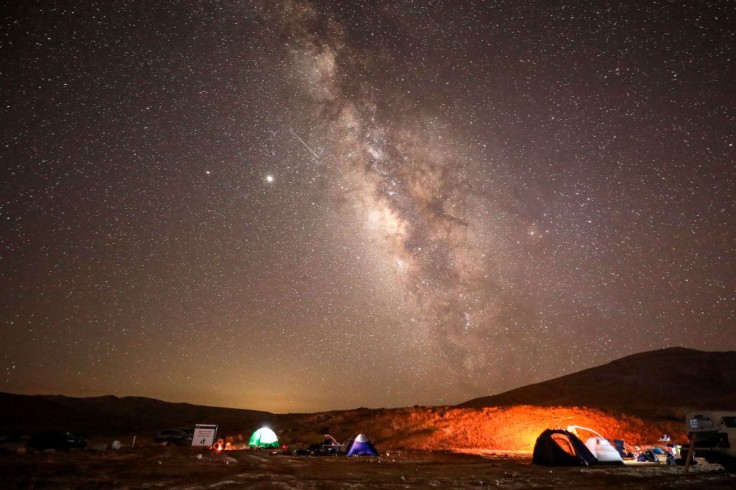
Comet Leonard was identified earlier this year and it is expected to pass by on Earth next week. In addition to this, stargazers will only have this chance to see the said comet since it has an orbital period of 80,000 years.
Comet Leonard Location
A new comet is heading towards the sun, with the possibility that it may grow brilliant enough to be observed with the naked eye by the end of the year, per Space.com.
The said comet, named Leonard, was discovered on January 3 by astronomer Gregory J. Leonard at the Mount Lemmon Observatory, also known as the Mount Lemmon Infrared Observatory.
During Mr. Leonard's discovery, it was an extremely weak object of magnitude 19.
To put it into context, comet Leonard is about 160,000 times dimmer than the faintest visible stars to the naked eye.
The comet was 5 astronomical units (AU) from the sun when it was originally discovered.
For those who are not familiar with AU, one AU is equivalent to the Earth's normal distance from the sun of 92.855 million miles, or 149.565 million kilometers. This only means that comet Leonard's location was out near Jupiter's orbit, far from the sun.
Time and Date to Get Best Comet Leonard Visibility
Currently, it has arrived in our solar system's neighborhood on its way to the Sun, and it is being described as the year's brightest comet, per NPR.
In addition to this, NASA reported that comet Leonard's location can be seen in the east before sunrise in the first few weeks of December, traveling between constellation Arcturus and the handle of the Big Dipper. This will be brighter but even more difficult to see when it reaches the horizon at the time of its closest distance to Earth.
Read Also: iPhone 13 vs. iPhone 14: Should You Buy Latest Apple Device Now or Wait for Next Version?
Moreover, NPR furthered that the best time to see the comet in North America will be on Monday morning.
Director of the Griffith Observatory in Los Angeles Ed Krupp told NPR that in order to view comet Leonard "means getting up very early, probably around 5 a.m. or so and looking more or less to the northeast."
However, after making its closest approach on December 12, FOX 8 stated that comet Leonard will be visible in the evening sky around December 14.
The comet Leonard's brightness will gradually fade as it travels away from Earth and toward the sun, with its closest approach to the sun occurring around Jan. 3, 2022.
Tips to Watch the Brightest Comet of 2021
For those who are curious to know how to watch the brightest comet, stargazers should follow the curvature of the Big Dipper (in Ursa Major) out past the end of the handle.
Additionally, Arcturus is the next brilliant star that stargazers will see. This is an excellent remembering trick to recall that "arc to Arcturus" from the Dipper handle.
Krupp estimated that the comet will be roughly half the width of a clenched fist to the left of Arcturus, in which stargazers will be able to see it without binoculars or a telescope.
Surprisingly enough, the comet's founder emphasized that this will be the sole opportunity to observe the comet, which may have passed through our Solar System previously roughly 75,000 to 80,000 years ago, per Inverse.
In an interview with the online magazine, Leonard remarked that it has already had one passage, but nobody captured that occurrence.
"It appears this comet is on what we call hyperbolic orbit so once it passes the Sun, it will be ejected from the Solar System and is going to be flown out for millions of years until likely stumbling into another star system," he furthered.









